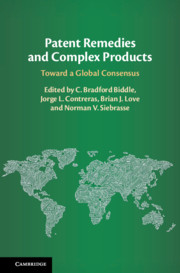I
may have a post of my own later this week or early next week on the Munich court's
issuance of an anti-antisuit injunction injunction against Daimler, as
reported here and here. But for today, I am pleased to hand over the reins to Professor Sarah Burstein, for a guest post on a recent U.S. design patent decision decision, Kustom Cycles, Inc. v. Dragonfly Cycle Concepts, LLC,
No. 5:18-cv-05024 (D.S.D. July 9, 2019).
Professor Burstein: Normally,
a damages award of $750 for patent infringement might seem to only be
noteworthy for being so small. But the recent award in Kustom Cycles, Inc.
v. Dragonfly Cycle Concepts, LLC is noteworthy because it is entirely too
much. Three times too big, to be precise.
In Kustom Cycles, the
plaintiffs filed a lawsuit alleging infringement of U.S. Patent No. D586,275,
which was issued in 2009 for a design for a “Flared Windshield for a
Motorcycle”:
The
defendants never responded, and the clerk entered a default. The plaintiffs
moved for default judgment, seeking $750 in design patent damages.
Specifically, the plaintiffs argued that they were entitled to $250
under § 289, which the court should treble pursuant to § 284:
Moreover, because this case involves allegations—now deemed true—concerning willful infringement, this Court should award enhanced damages of three times the statutory minimum requested under 35 U.S.C. § 284, for a total of $750. See, Halo Electronics, Inc. v. Pulse Electronics, Inc., 831 F.3d 1369, 1381 (Fed Cir. 2016) (“the subjective willfulness of a patent infringer, intentional or knowing, may warrant enhanced damages” under § 284).
The
court agreed and awarded the plaintiffs $750 for design patent
infringement—contrary to clearly-established Federal Circuit law.
Design
patent owners are entitled to all the remedies that utility patent owners are
entitled to, including “damages adequate to compensate for the infringement,
but in no event less than a reasonable royalty” under 35 U.S.C. § 284. But for
certain acts of infringement, design patent owners can elect to recover a
different monetary remedy, set forth in 35 U.S.C. § 289:
Whoever during the term of a patent for a design, without license of the owner, (1) applies the patented design, or any colorable imitation thereof, to any article of manufacture for the purpose of sale, or (2) sells or exposes for sale any article of manufacture to which such design or colorable imitation has been applied shall be liable to the owner to the extent of his total profit, but not less than $250, recoverable in any United States district court having jurisdiction of the parties.
Nothing in this section shall prevent, lessen, or impeach any other remedy which an owner of an infringed patent has under the provisions of this title, but he shall not twice recover the profit made from the infringement.
Thus,
in cases where § 289 applies, the patent owner is entitled to the
infringer’s “total profit” for the “article of manufacture to which the
infringed design has been applied,” Samsung Elecs. Co. v. Apple Inc., 137 S.
Ct. 429, 436 (2016), but in any case, no less than $250. (If you’re wondering,
Congress set this minimum amount in 1887 and hasn’t updated it since.)
Importantly,
while § 284 explicitly allows a court to “increase” an award under that
section “up to three times,” § 289 contains no such language. Therefore,
in 1992, the Federal Circuit ruled that judges may not treble § 289
awards. Braun Inc. v. Dynamics Corp. of Am., 975 F.2d 815, 824 (Fed.
Cir. 1992).
Of
course, litigants are free to argue that settled law is wrong. But there’s no
indication that’s what happened here. The plaintiffs’ motion for default judgment made no mention of Braun
and the district judge did not appear to be aware of it,
either.
This
case is a good reminder of the need for both litigants and judges to closely
read the applicable statutory provisions and not assume that principles in
utility-patent cases automatically or necessarily apply in design patent cases.


